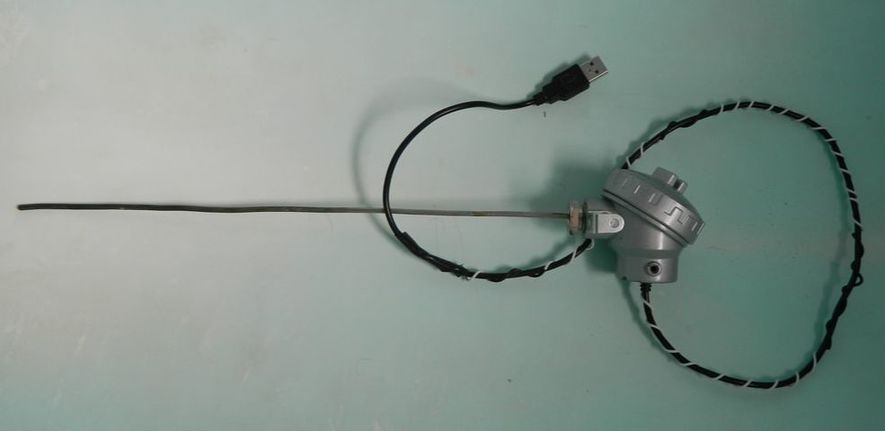Digital Sensors.
Connecting digital sensors to equipment can be a difficult process because of turning the sensor’s digital output into meaningful information. Benrhos can help with this!
We have produced two types of data loggers with numerous sensor inputs that have remote in/out access via Wi-Fi to them, and we have also produced thermocouple based digital sensors with Wi-Fi for display on the Rotronic RMS system (https://blog.rotronic.co.uk ). It is now possible to digitally connect just about any type of thermocouple or platinum resistance thermometer to any location accurately. (See images below).
Digital sensors are small millimetre sized chips that can measure anything from temperature to the carbon dioxide content in air, sometimes as a single sensor or combined such as temperature, humidity and pressure on a single miniature circuit board. What comes out of the chip varies between manufacturers and although communication standards exist it can be tricky turning the chips output into usable data.
All of these sensors possess a broad range of uses, including scientific, medical, and aerospace applications, in test and measurement equipment, and in industrial automation.
The use of digital sensors has many advantages over conventional methods; just consider one type of digital temperature sensor that is readily available:
The prototype Benrhos loggers are available for trialling so if you wish to see if they are suitable for your work then please contact Dave Ayres on 01341 440 649 or [email protected] as well as for anything else concerning digital sensors.
Connecting digital sensors to equipment can be a difficult process because of turning the sensor’s digital output into meaningful information. Benrhos can help with this!
We have produced two types of data loggers with numerous sensor inputs that have remote in/out access via Wi-Fi to them, and we have also produced thermocouple based digital sensors with Wi-Fi for display on the Rotronic RMS system (https://blog.rotronic.co.uk ). It is now possible to digitally connect just about any type of thermocouple or platinum resistance thermometer to any location accurately. (See images below).
Digital sensors are small millimetre sized chips that can measure anything from temperature to the carbon dioxide content in air, sometimes as a single sensor or combined such as temperature, humidity and pressure on a single miniature circuit board. What comes out of the chip varies between manufacturers and although communication standards exist it can be tricky turning the chips output into usable data.
All of these sensors possess a broad range of uses, including scientific, medical, and aerospace applications, in test and measurement equipment, and in industrial automation.
The use of digital sensors has many advantages over conventional methods; just consider one type of digital temperature sensor that is readily available:
- Very low cost: For covering the range -55°C to 125°C to an uncertainty of ±0.5°C or better, complete with cable and a protective stainless steel sheath around the sensor. All this can cost less than £3 for just one.
- Typically sensors communicate using the I2C (I-squared-C) or one-wire protocol which allows numerous sensors to branch from a single cable. Such as when temperature mapping a fridge or freezer where only one cable needs to be threaded in through the door then as many sensors as required can be branched off to the measurement points. As each sensor can have its own unique digital serial number it can be poled and its temperature read and logged. Each sensor can have alarm settings programmed into it which can also be poled and its alarm state checked.
- Having a digital output means the sensor can be connected to any suitable digital device and be read without any effect on the accuracy unlike conventional sensor-instrument systems where both the sensor and the reader need to be calibrated. The result of this is that only the sensor needs to be calibrated or checked periodically and not the reader. This leads to a change in how instruments are calibrated. For example: When an instrument needs calibrating the reader does not have to be returned to a suitable calibration provider, all that needs to happen is that a newly calibrated digital sensor is sent to the location to replace the old sensor which is then returned for checking and recalibration, commonly termed plug-and-play or hot swapping.
The prototype Benrhos loggers are available for trialling so if you wish to see if they are suitable for your work then please contact Dave Ayres on 01341 440 649 or [email protected] as well as for anything else concerning digital sensors.


